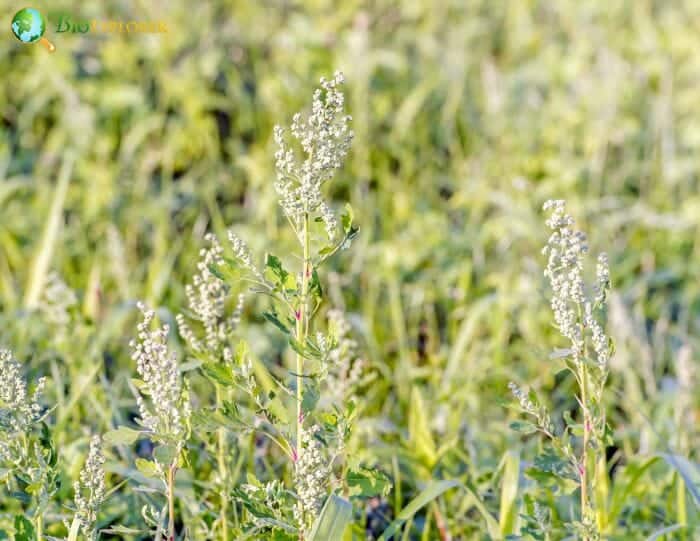
Easily recognizable but often called the lambs quarter, the grape-leaved goosefoot (Chenopodium album) is a plant found in several countries worldwide.

The traditional family of chenopods includes about 1500 species and 100 genera[1]. The name Goosefoot is derived from the leaves shape, which resembles the foot of a goose. Its natural habitat in Asia and Europe grows on fallow land, arable land, or riverbank wetlands.

It is often one of the first weeds to appear in recently disturbed soils. Other common names include Pigweed, HenFrost-blite, and Baconweed Bacon WeedFat.

The size of the plant varies widely based on the nutrient content of the soil, and it can reach heights of 4-6 feet tall and 4-12 in wide.

This fast-growing plant has greenish-blue leaves and is covered in soft woolly hairs for a velvety feel. In fall, small greenish-yellow flowers bloom in the axils of the leaves and on the tips of the branches while the flower head develops.
The flowers aren’t quite conspicuous and are wind-pollinated. Each plant produces large amounts of seeds that allow this plant to re-sow very quickly and become aggressive in the landscape.











